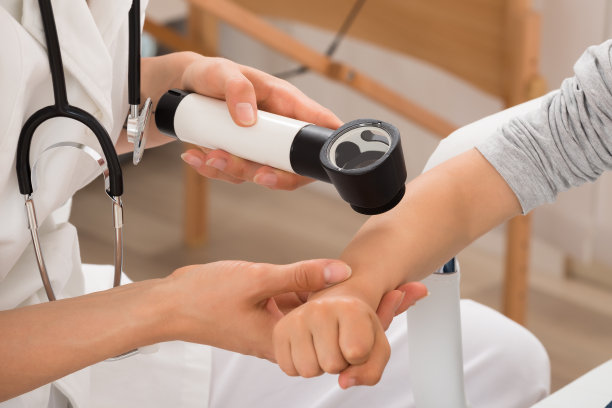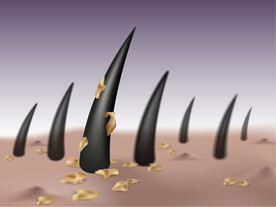Bullous Pemphigoid: Clinical Review for Health Professionals
Introduction
Bullous pemphigoid (BP) is a subepidermal autoimmune blistering disorder characterized by tense bullae on erythematous or urticarial skin. It predominantly affects individuals over 60 years of age, with an incidence of 6–13 cases per million inhabitants annually. Although less common in younger adults and children, BP carries significant morbidity due to pruritus, risk of infection, and comorbidities in the elderly population.
Epidemiology and Risk Factors
- Age and Gender: Peak incidence between 70–80 years; slight male predominance.
- Genetic Predisposition: HLA-DQB1*03:01 association in some populations.
- Triggers: Medications (e.g., dipeptidyl peptidase-4 inhibitors, loop diuretics), radiation therapy, burns, UV exposure, and neurological disease (e.g., dementia, Parkinson’s disease) have been linked to BP onset.
Pathophysiology
BP arises from autoantibodies targeting hemidesmosomal antigens within the dermal-epidermal junction, primarily BP180 (type XVII collagen) and BP230. IgG autoantibody binding activates complement and recruits inflammatory cells (eosinophils, neutrophils), leading to subepidermal blister formation. Eosinophil degranulation and protease release contribute to tissue separation and blister fluid accumulation.
Clinical Presentation
- Cutaneous Findings:
- Tense Bullae: Clear or hemorrhagic, 1–3 cm in diameter, on erythematous or urticarial bases.
- Pruritus: Often severe and precedes blister formation by weeks or months.
- Distribution: Flexural areas (axillae, groin), lower abdomen, thighs, and forearms. Mucosal involvement occurs in 10–30% of cases, typically presenting as painful erosions on the oral or genital mucosa.
- Prodromal Phase: Eczematous, urticarial, or papular lesions without bullae in up to 20% of patients.
- Subtypes: Localized BP (mucous membrane–limited), drug-induced BP, and rare variants such as nodular BP and cicatricial forms.
Diagnosis
- Skin Biopsy:
- Histopathology: Subepidermal blister with a mixed inflammatory infiltrate rich in eosinophils.
- Direct Immunofluorescence (DIF): Linear IgG and/or C3 deposition along the basement membrane zone—gold standard diagnostic test.
- Serologic Tests:
- Indirect Immunofluorescence (IIF): Circulating IgG autoantibodies detectable on salt-split skin, binding the epidermal side.
- ELISA: Quantification of anti-BP180 and anti-BP230 autoantibodies correlates with disease activity and can guide therapy.
- Additional Workup: Evaluate for potential triggers (medication review, malignancy screening if indicated, neurological assessment).
Differential Diagnosis
- Pemphigus Vulgaris: Flaccid, suprabasal bullae; positive Nikolsky’s sign; mucosal predominance.
- Dermatitis Herpetiformis: Intensely pruritic, grouped vesicles on extensor surfaces; granular IgA deposition.
- Bullous Impetigo: Localized superficial bullae caused by Staphylococcus aureus; culture and Gram stain aid diagnosis.
- Linear IgA Disease: Subepidermal vesicles with linear IgA deposition on DIF.
Management
Topical Therapies (Mild BP)
- High-Potency Topical Corticosteroids: Clobetasol propionate 0.05% applied BID to affected areas; can achieve disease control in localized or mild generalized BP.
- Topical Calcineurin Inhibitors: Tacrolimus 0.1% for adjunctive therapy in sensitive sites or steroid-sparing.
Systemic Therapies
- Oral Corticosteroids: Prednisone starting at 0.5–1 mg/kg/day for moderate-to-severe disease; taper guided by clinical response and antibody titers.
- Steroid-Sparing Agents:
- Tetracyclines ± Nicotinamide: Anti-inflammatory properties; dosing: tetracycline 500 mg PO BID with nicotinamide 250 mg PO TID.
- Dapsone: 50–150 mg/day; monitor for hemolysis and methemoglobinemia.
- Immunosuppressants: Azathioprine (1–2 mg/kg/day), methotrexate (15–25 mg weekly), or mycophenolate mofetil (1–2 g/day) in combination with low-dose steroids.
- Rituximab: Anti-CD20 monoclonal antibody for refractory or relapsing cases; two 1 g infusions 2 weeks apart, repeated at 6 months if needed.
- Biologics and Emerging Therapies: Omalizumab (anti-IgE), dupilumab (anti-IL-4Rα), and various JAK inhibitors are under investigation for BP.
Supportive Care
- Pruritus Control: Antihistamines (e.g., cetirizine, hydroxyzine) and neurokinin-1 receptor antagonists for severe itching.
- Skin Care: Gentle cleansing, emollients, and infection prevention with topical antiseptics or antibiotics if superinfection occurs.
Monitoring and Follow-Up
- Disease Activity: Track blister counts, pruritus severity, and antibody titers (ELISA) every 4–8 weeks until remission.
- Therapy Adverse Effects: Monitor blood pressure, glucose, bone density, and complete blood count for patients on systemic corticosteroids or immunosuppressants.
- Tapering: Gradually reduce therapy once disease control is achieved, maintaining low-dose maintenance until complete remission is sustainable.
Prognosis and Outcomes
- Remission Rates: Approximately 60–70% achieve remission within 1–2 years with appropriate therapy.
- Complications: Secondary infection, sepsis, steroid-related osteoporosis, and cardiovascular risks are leading causes of morbidity and mortality in elderly patients.
Patient Education
- Instruct patients on proper application of topical medications and recognition of early relapse signs.
- Encourage maintenance of skin hygiene, avoidance of known triggers, and adherence to follow-up for monitoring and laboratory surveillance.
Conclusion
Bullous pemphigoid requires a multidisciplinary approach encompassing dermatology, immunology, geriatrics, and primary care. Early diagnosis, tailored immunomodulatory therapy, and vigilant monitoring optimize outcomes, minimize treatment-related risks, and improve quality of life in affected patients.







